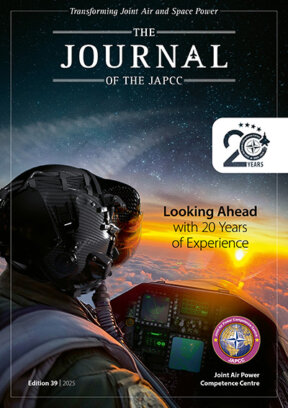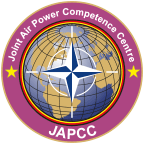It is an honour to introduce my first edition of the JAPCC Journal as the new Assistant Director, especially during the significant milestone of JAPCC’s 20th anniversary. This moment invites reflection on the past two decades and offers insight into the future. I look forward with great enthusiasm to continue our proud tradition of insightful and innovative analysis.
JAPCC’s first two decades coincided with a rapidly evolving global landscape, beginning with the ‘War on Terror’ after the 2001 attacks in the USA, and subsequent attacks in London, Sharm El Sheikh, and Amman in 2005. This was followed by the 2008 global economic crisis, the Arab Spring in 2010, the rise of ISIS in 2014, a worldwide pandemic in 2020, and ongoing crises in Ukraine and the Middle East in 2022 and 2023.
Throughout this period, NATO and Western coalitions operated with near-uncontested air dominance in Iraq, Afghanistan, Syria, and Libya. However, this era of assured air superiority is rapidly ending. Today’s affordable, advanced technologies empower adversaries to challenge Western air power, raising a vital question: How can NATO sustain air superiority in an era where disruptive threats increasingly undermine its technological advantage?
Additionally, the post-Cold War ‘peace dividend’ has led Western nations to significantly downsize their military forces. The focus shifted from quantity to capability, favouring fewer but more technologically advanced platforms. However, recent conflicts in Ukraine, the Middle East and the Red Sea demonstrate that mass still matters. Even fifth-generation assets face challenges when outnumbered by multiple lower-generation systems. Simply put, in air power, capacity matters as much as capability.
In this edition, we begin with strategic insights from the Air Chiefs of the Hellenic and Romanian Air Forces. The Transformation and Capabilities section explores advances shaping NATO’s future ranging from AI in Air Command and Control, integration of fourth- and fifth-generation aircraft, autonomous collaborative platforms, to cyber-electromagnetic activities.
Our Viewpoints section features analysis on SATCOM in the Arctic, adaptation of air and missile defence training, and the crucial role of Host Nation Support. Lastly in our Outside the Box piece, represent a proposal to a new NATO air base to enhance operational reach and agility.
We look forward to working with you over the next 20 years and beyond. Your continued feedback is vital to NATO’s Joint Air and Space Power evolution. Visit us at www.japcc.org, follow us on LinkedIn, or reach out at .
Vito Cracas
Colonel, ITA AF
Assistant Director, JAPCC








